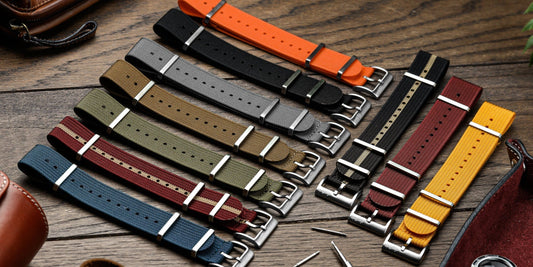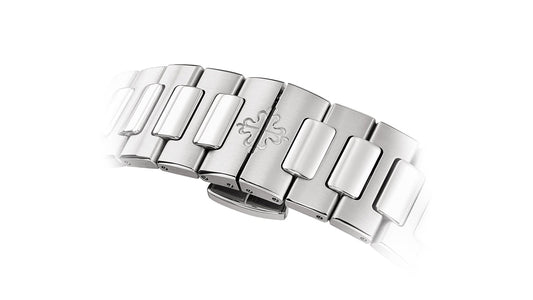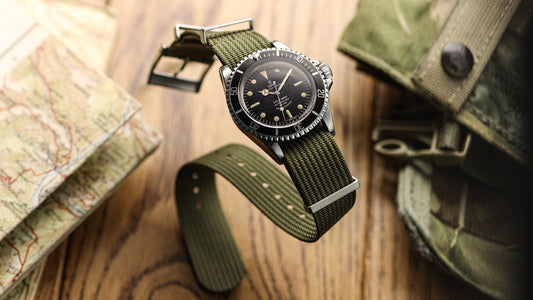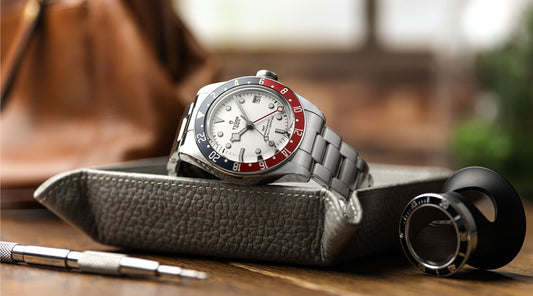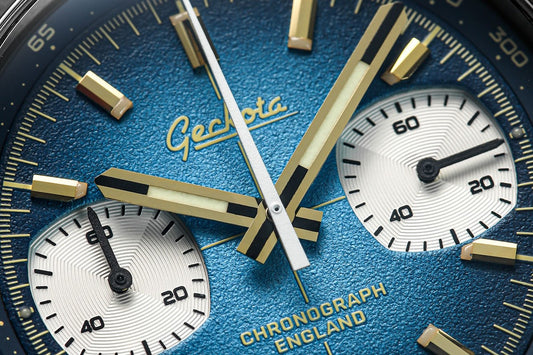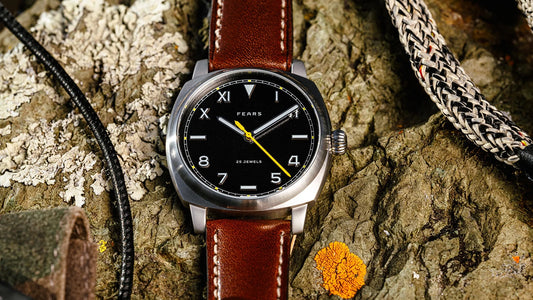If your watch strap isn't fitting you properly, here's a guide on how to adjust your metal watch strap.
When you’ve spent money on a good timepiece, you want it to sit on your wrist just right. But wrists come in all sizes, so there’s a good chance you might need to make some adjustments if you’ve gone for a metal strap.

Image Credit: WatchGecko
- Regular price
- £40.00
- Regular price
-
- Sale price
- £40.00
- Unit price
- per
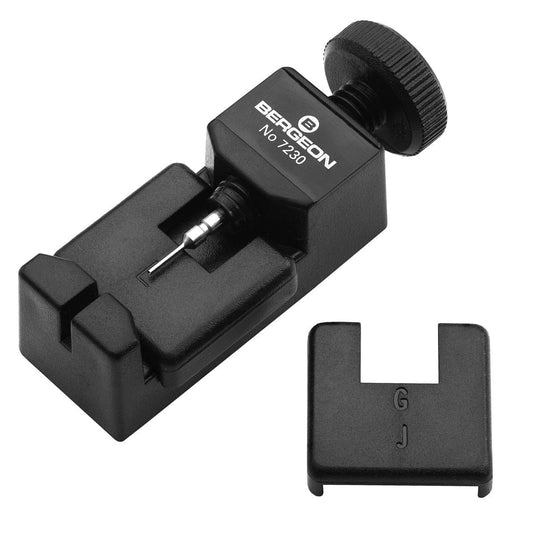
- Regular price
- £28.00
- Regular price
-
- Sale price
- £28.00
- Unit price
- per
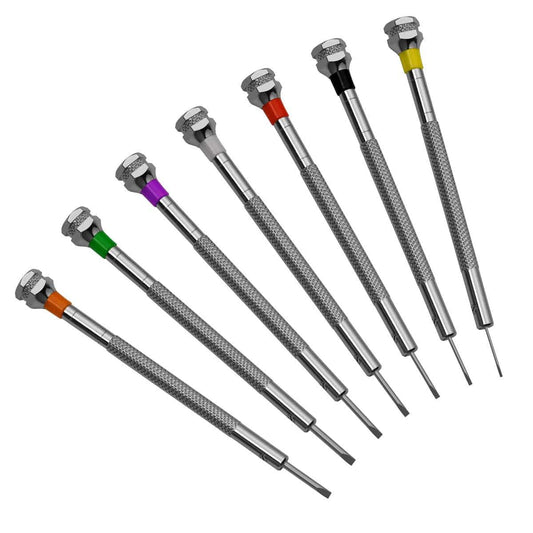
- Regular price
- £23.00
- Regular price
-
- Sale price
- £23.00
- Unit price
- per
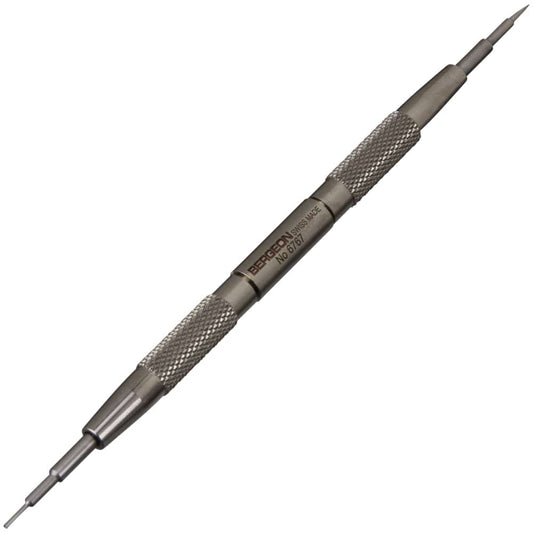
All good-quality metal watch straps are configurable, however. So if you’ve just bought a watch strap that doesn’t quite fit properly, we’ve got this useful guide to how to adjust your metal watch strap to fit like a glove.
Generally, straps are held together with screws or pins - or at least the adjustable bits are. But each requires slightly different techniques. Let’s start with pins, then screws, then fine-tuning the buckle itself.
How to adjust a stainless steel watch strap held together with pushpins.

Image Credit: WatchGecko
You'll need: A pin pusher
A pin pusher can be used to resize oyster straps and adjust pin and collar systems.
With oyster straps, there tends to be a set of arrows on the inside of the strap. These show you which way you’re supposed to push the pins out which is really useful. Also, bear in mind that the pins with arrows are the only removable ones.
A good example of a good-quality pin-held strap is the Warrington. If you look at the close-ups of the inside of the strap, you’ll see the clearly stamped arrows. Be mindful though… Doing it the other way might break your links.
The pins will have a rounded end, and a side with a split end. Using the pin pusher, and making sure you’re pushing on the rounded side, push the pin all the way out of the strap. Repeat until you’ve removed the links you want to.

Image Credit: WatchGecko
Then, when joining the links back together, make sure you put the pin in the opposite direction to the arrow - round end down.
Once the pin is slotted into the strap, use the pin pusher or spring bar tool to ensure it’s securely installed. If you don’t do this, it’s likely to be loose, and you risk the strap breaking and possible loss of the pin.

Image Credit: WatchGecko
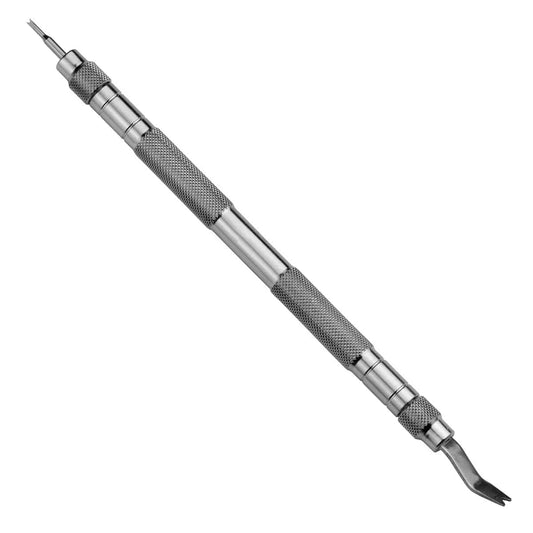

When it comes to pin and collar bracelets, there are a few different types to consider, such as super engineer straps - but they can be adjusted in the same way.
To remove a link from your pin and collar bracelet, use a pin pusher. Much like with oyster straps, in order to make sure you’re pushing the pins out the right way, there will usually be arrows telling you which way to push. Doing it the other way round risks breaking the links.
Push the pins you need to remove all the way out.

Image Credit: WatchGecko
To link the strap together, slot the small sleeve into the wider hole on the inside of the link. Then join the links together and slide the metal pin through the holes. Please note that one side of the pins will have a narrow line engraved onto it. This side will have to click into the hollow piece of metal you just put in.
How to adjust a metal watch strap without pins.
You'll need: 2 x 2.5ml screwdrivers
Milanese or shark mesh straps can both be adjusted with 2.5ml screwdrivers.
Rivet bracelets are popular and stylish screw-held straps. You can see a good example of how the screws attach to links on our Vintage Berwick. Have a look at the close-up, and you should get the idea.
And they’re nice and straightforward to adjust too. To shorten rivet bracelets, you use two 2.5ml screwdrivers for the screws on either side.

H Link Shark Mesh Image Credit - WatchGecko



First of all, place one screwdriver upright on a flat surface. You use this to hold one of the screws in place. Then, using the other screwdriver, unscrew the opposite screw on the other side of the strap.
You might be able to get this to work using just one screwdriver. However, it'll be harder to tighten the screws when putting the strap back together. To add or join links, just do the same process in reverse.
Milanese and shark mesh straps work on exactly the same principle as rivet bracelets. You use one screwdriver to hold the screw in place, and the other to work the screw out. Piece of cake.
Adjusting or Resizing the Buckle
You may have the option of adjusting your watch strap by the buckle itself.
How to adjust classic mesh straps
You'll need: A spring bar tool
It’s nice and simple to adjust a classic mesh watch strap. First, undo the buckle by slotting your spring bar tool into the rectangular hole. Then gently lift the clip up. You can then freely adjust the buckle to the desired size.

Classic Milanese Mesh Image Credit - WatchGecko
How to adjust micro adjustments
In some cases, adjusting the strap itself may be overkill. You might find that making small adjustments to the buckle are all that’s required, if the strap is only a little out.
To make micro adjustments, you’ll need to use your spring bar tool. Simply push and release the spring bar. Once it’s popped out, you can re-position to any of the available positions on the buckle.
To see what we mean, check out the Classic Berwick, which has three different positions on the buckle. Or the Shaldon, which has six.
To be quite honest, metal watch strap adjustment isn’t rocket science. Watch designers and manufacturers have deployed a lot of time and skill ensuring that their straps are easily configurable for the wearer… But without ever sacrificing style. It’s no coincidence that these elements are obvious, but only when you’re looking for them.

The Tudor Black Bay GMT fitted to the Warrington strap Image Credit - WatchGecko
That should be enough to get you started on most common or garden metal watch straps. But if there’s anything you’re not sure about, we’re always happy to help watch enthusiasts. Just hit us up on social media, and we’ll be glad to help you out!






